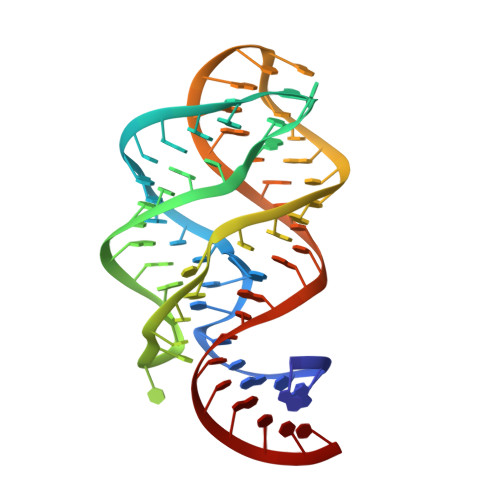Adaptive ligand binding by the purine riboswitch in the recognition of Guanine and adenine analogs
Gilbert, S.D., Reyes, F.E., Edwards, A.L., Batey, R.T.(2009) Structure 17: 857-868
- PubMed: 19523903
- DOI: https://doi.org/10.1016/j.str.2009.04.009
- Primary Citation of Related Structures:
3FO4, 3FO6, 3G4M, 3GAO, 3GER, 3GES, 3GOG, 3GOT - PubMed Abstract:
Purine riboswitches discriminate between guanine and adenine by at least 10,000-fold based on the identity of a single pyrimidine (Y74) that forms a Watson-Crick base pair with the ligand. To understand how this high degree of specificity for closely related compounds is achieved through simple pairing, we investigated their interaction with purine analogs with varying functional groups at the 2- and 6-positions that have the potential to alter interactions with Y74. Using a combination of crystallographic and calorimetric approaches, we find that binding these purines is often facilitated by either small structural changes in the RNA or tautomeric changes in the ligand. This work also reveals that, along with base pairing, conformational restriction of Y74 significantly contributes to nucleobase selectivity. These results reveal that compounds that exploit the inherent local flexibility within riboswitch binding pockets can alter their ligand specificity.
Organizational Affiliation:
Department of Chemistry and Biochemistry, University of Colorado at Boulder, Campus Box 215, Boulder, CO 80309-0215, USA.

















